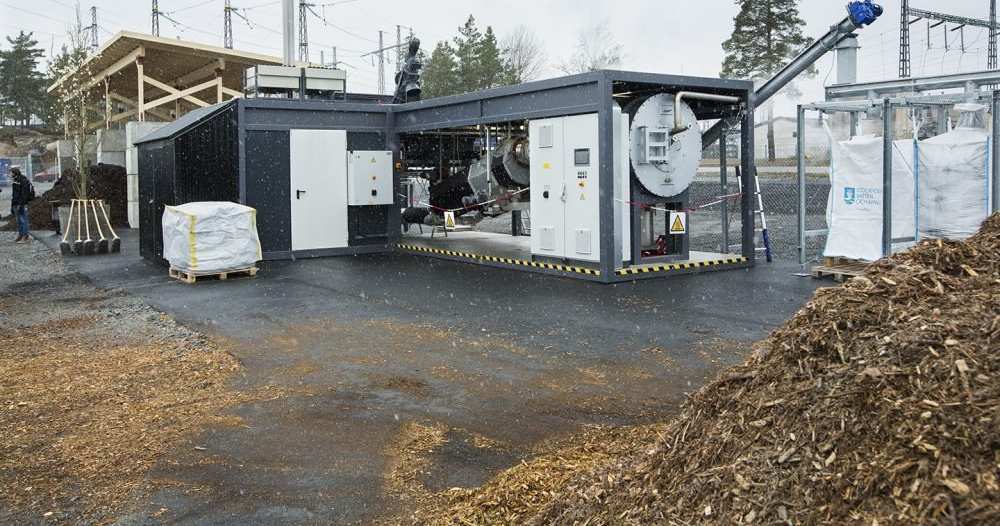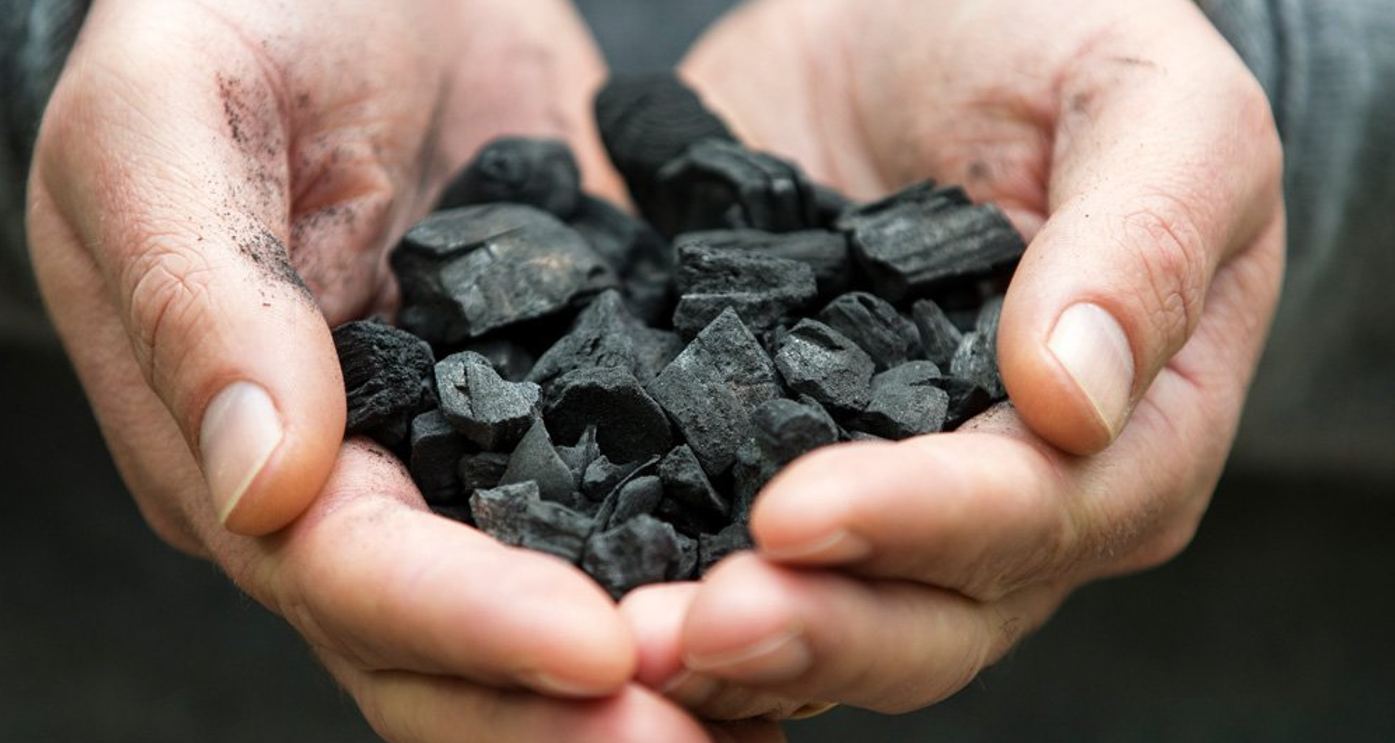Reprinted with permission from World At Large, a news website of nature, politics, science, health, and travel.

Imagine if every time you threw out your lawn and garden waste, you were actively fighting global warming? That’s the capacity a new soil amendment technology hopes to unleash across the world.
This potentially-revolutionary method of making fertilizer that almost completely removes greenhouse gas emissions has received a grant from Bloomberg Philanthropies to be incorporated into 7 major cities’ landscaping programs.
Making “biochar” as it’s called, has been modernized recently in Sweden, and is done by putting grass trimmings, hedge clippings, tree branches, or any other kind of yard waste, into an enclosed space and “pyrolyzing it” in such a way as to avoid the rapid oxidation of CO2.
Turned into a charcoal-like substance, it’s not only carbon negative, meaning it removes more CO2 than it produces, but also more effective soil nutrition than other traditional soil amendments like nitrogen-phosphorus fertilizer.
On Tuesday, Bloomberg Philanthropies announced it was awarding grants of $400,000 to seven major cities in Scandinavia and the U.S. to implement the winning-project of the charity’s 2014 Mayor’s Challenge: The Stockholm Biochar Project.
Each city will receive implementation and technical support from Bloomberg to develop city-wide biochar projects and engage residents in the fight against climate change. It’s expected to produce 3,750 tons of biochar, all from lawn and garden waste from city parks, median strips, and other green spaces, which would sequester almost 10,000 tons of CO2 per year—the equivalent of taking 6,250 cars off the roads.
Normally, municipal lawn and garden waste is trucked to landfills where it will decompose and release all the carbon it absorbed through its life back into the atmosphere, as well as other gasses from the bacteria feeding on it. With a biochar plant however, every branch and twig thrown into the sophisticated-yet-straight-forward furnace is having its carbon captured almost forever.
Stockholm success
This revolution started in Stockholm, where, after opening its first five biochar plants in 2017, the city began distributing this new fertilizer/soil amendment to citizens for free, if they merely bring whatever yard waste they might have.
RELATED: IKEA Will Start Selling Solar Panels in Some U.S. Stores This Fall
“If you buy something from the store you want to do it correct from the beginning, but if you get something for free you can sort of play around with it, and see how it works in your garden,” Mattias Gustafsson, biochar expert, consultant, and original member of the Stockholm Biochar Project, told WaL.

“Biochar, if you look at it under a microscope, it looks a bit like a sponge, so that will absorb and absorb nutrients and water, so if you put that in the soil it’s like a nutrient-loaded battery,” says Gustafsson. “Let’s say you’re sowing potatoes: you dig a ditch where you have the potatoes and you put some biochar in there, then you put the potatoes, then you cover it with soil”.
Extensive scientific research has shown that compared to traditional soil amendments and fertilizer, biochar, when combined with animal waste such as cow urine or manure, can increase yields more than 100%. A meta-analysis of meta-analyses examining the benefits of biochar in agriculture found that, especially for acidic soils like those in the tropics, and especially when combined with other fertilizers, biochar can significantly increase crop yield.
LOOK: City Trees and Soil Are Sucking More Carbon Out of the Atmosphere Than We Thought
Root length, mass, and number of tips all increased substantially in crops grown with biochar, which could significantly impact carbon-capturing forest farms. Microbial content in the soil was also increased substantially through the use of biochar.
Research done at the Ithaka Institute in Nepal showed that cow urine-enriched biochar blended with compost resulted on average in 123% greater crop yield compared to organic farming practices done with cow urine-enriched compost, and 100% greater crop yield compared to the use of nitrogen-potassium-phosphorus fertilizer.
Weekend carbon capture
The scalability, ease-of-use, and remarkable reduction in the emissions from fertilizer production puts biochar at a breakout moment. With governments routinely pledging to give scientists billions to develop new ways to prevent climate change, biochar imposes only an extra step during one’s bi-weekly yardwork chores.
“It’s unique because you put the biochar into an area with the absence of oxygen, and we get a very stable form so it can stay in the soil for hundreds up to thousands of years,” says Gustafsson. “We have more cities in Sweden that are following the Stockholm Biochar Project model and more are on the way, but we are trying to get more industries interested in using and producing biochar”.
In 2019, according to Bloomberg Philanthropies, Minneapolis had been “blown away” by how simple the biochar solution was, and has since been bringing truckloads into town from a biochar plant in Missouri.
“It was a lot simpler than I imagined it to be,” said Robin Hutcheson, Minneapolis’ public works director at the time. “I think I had imagined biochar as something that was chemical and complicated and difficult to produce and difficult to use. What I learned is that it is actually simple to produce and able to be used in a variety of settings”.
Minneapolis is looking at all kinds of ways of using biochar. They have given it to local Native American Tribal governments to boost agriculture—which it has, to the tune of 30%. They’ve looked into including it with roadway reconstruction projects to boost rainwater collection, another benefit of the sponge-like biochar. They want to open their own biochar plant, after being impressed how Stockholm’s turned the heat from the production process into energy for the city’s power grid.
Now, one of the most important steps is on the cusp of being completed: the transition from a government program into a market industry. Currently in Sweden one can simply walk into a garden store and buy biochar. Most critically in the age of e-commerce, various vendors on Amazon in a number of countries will ship biochar right to your house, and while the price is high for a soil amendment, the amount needed for sowing is quite low.
“I think it’s a really important point for cities to reach out to the public as well,” adds Gustafsson. “Thank you for bringing your sticks and branches to our biochar machine, please put the biochar in your garden.”
Gustafsson thinks there will be a day when, like a weekend-woodchipper rental, people will be able to rent a mobile-biochar plant for the end-of-season hedge trimming.
“We had the idea of a small machine going around making biochar that people can rent, so definitely a thing that could be possible, someone just has to make the economics around it”.
SHARE This Story With All Your Friends Who Love Stories of Real Innovation…




















